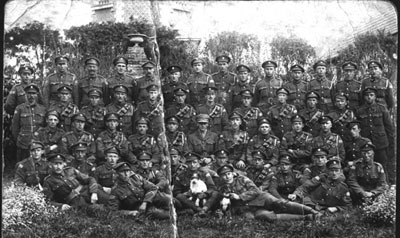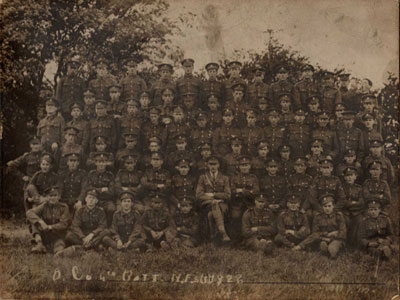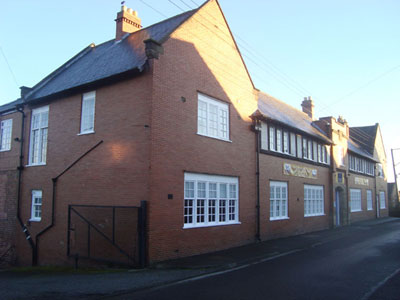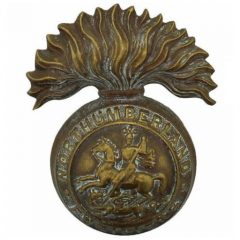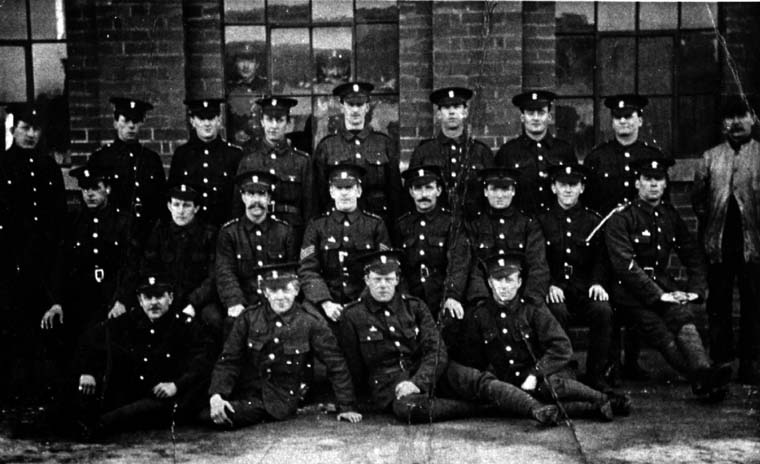'Service' Battalion
'D' Coy
'D' Company (Prudhoe) notes
HQ - The Drill Hall, Prudhoe
Data on 155 known former members of 'D' Coy is held.
A 2nd Coy ('H') was formed at Prudhoe
'H' Coy amalgamated with 'D' Coy during Jan 1915
Full Company strength from here on was approximately 227 officers and men
'D' Company subdivided into four platoons - 13, 14, 15 & 16
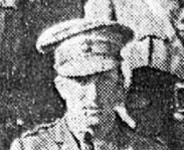
Officer Commanding: Capt. William Robb
The Robb brothers were born in Hexham and educated at George Watson’s Boy’s College in Edinburgh, where all three served in the school Officer Training Corps. In 1907 William was gazetted as a 2nd Lt in the 1st Volunteer Battalion, NF and John Ridley joined the 4th NF in March 1909. Both were promoted to full lieutenant in June 1910, then captain in Dec 1912. They were mobilised in August 1914 and served to the end of the war.
William made a career out of the army, taking a regular commission in the King’s Own Yorkshire Light Infantry. He later served as the Commanding Officer of the North Staffordshire Regiment and was the Brigadier commanding the 9th Infantry Brigade in the British Expeditionary Force during WW2.
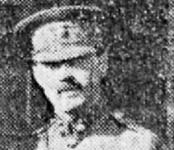
2nd Lt Herbert Benjamin Speke
Herbert was born in Dowlish, Somerset where his father was Rector of the parish. He was boarding at Newbrough Lodge in the village of Newbrough by 1901 and employed as a commercial clerk.
On the 3rd of January 1903 Herbert formed a partnership with Frederick Wise in a shop basement at Collingwood Street, Newcastle. In the new firm of Wise, Speke and Co, Stockbrokers; Herbert looked after the dealing, whilst Mr Wise attended to the general correspondence and gave advice as to investment.
Frederick Wise apparently travelled extensively, to Canada, the USA, Mexico, Russia and India, giving himself first hand knowledge of such investment sectors, as railways, mines and utilities in all of these countries.
The business prospered and within three years, new premises were sought as new partners and attaches were taken on. In 1923, the business moved again, this time to Grey Street, which was the home of the firm for 49 years. Herbert died in 1947. Herbert’s son Neil became a partner in 1950.
Herbert was married at Hexham in 1913 to Sybil Reed (daughter of Charles Archibald Percival Reed & Isabella Mary Straker) Isabella Mary Straker was the daughter of John Straker and Isabella Coppin. Children Neil and Muriel Speke
Capt Herbert Benjamin Speke of Pigdon was High Sherrif of Northumberland in 1930.
Sources:
Ward's Directory of Newcastle on Tyne, 1916
Article:
Wise Speke celebrates its name change to Brewin Dolphin; FINANCE MATTERS Brewin Dolphin Incorporating Bell Lawrie Hill Osborne Wise Speke.
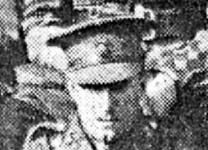
2nd Lt John Wilfrid Robinson
John joined the 4th NF on the outbreak of war. He was the younger brother of Capt Frank Robinson.
Col Sgt J. Sykes .........................................Link to photo
'Reserve' Battalion (2/4th)
'D' Coy
'D' Company notes
The 2/4th battalion became part of the newly formed 188th Bde, 63rd Divn during January 1915.
The 63rd Divn was tasked with home defence, but was disbanded in Jul 1916.
The 2/4th joined the 217th Bde, 72nd Division, but continued with home defence duties.
The 72nd Divn was broken up Jan - Apr 1918
Officer Commanding: Capt. Mervyn. Ayton
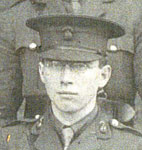
2nd Lt Edward Anderson
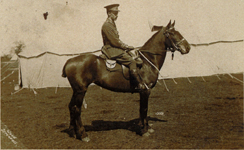
2nd Lt James Milne Robb
James was born in Hexham, Northumberland on the 26th of January 1895, the third son of a draper, James Thomas Robb, and his wife Mary Elizabeth née Weir. He was educated at George Watson's School in Edinburgh and Durham University.
Robb enlisted in the 4th Bn after the outbreak of war and was commissioned into the Northumberland Fusiliers as a 2nd Lt on the 10th of November 1914,and promoted to captain a year later. In August 1916 he transferred to the Royal Flying Corps.
After learning to fly, James was posted to No. 32 Squadron RFC, a fighter squadron on the Western Front. He survived being shot down by a German aircraft in January 1917 and two months later was wounded in both thighs and admitted to hospital in Rouen. He was wounded in March and was promoted to Flight Commander in 1918. After spending some time with a training unit in England he returned to the Western Front in May 1918 as a flight commander with No. 92 Squadron RFC, flying SE5as. James achieved the squadron's first air victory on 22 July, shooting down a German aircraft. In February 1919 he was awarded the Distinguished Flying Cross.
Robb served with the Royal Air Force throughout the interwar years and in 1939 travelled to Canada to help set up the Empire Air Training Scheme, which went on to train aircrew throughout WW2.
James became Deputy Chief of Combined Operations under Lord Louis Mountbatten in 1942. During Operation Torch he was air advisor to the Supreme Allied Commander, Lt Gen. Dwight Eisenhower and in February 1943, Eisenhower appointed him Deputy Commander of the Northwest African Air Forces. When Eisenhower became Supreme Allied Commander in Europe in January 1944, he brought Robb to his Supreme Headquarters Allied Expeditionary Force as Deputy Chief of Staff (Air). Robb became Commander-in-Chief of Fighter Command in 1945, and learned to fly the Gloster Meteor, the RAF's first operational jet aircraft. He became Vice-Chief of the Air Staff in 1947, and then Commander in Chief, Air Forces, Western Union Defence Organisation in 1948. In 1951 he became Inspector General of the RAF.
An article on James was published in the Hexham Courant on Friday, 10 April 2009. www.hexhamcourant.co.uk
Col Sgt
